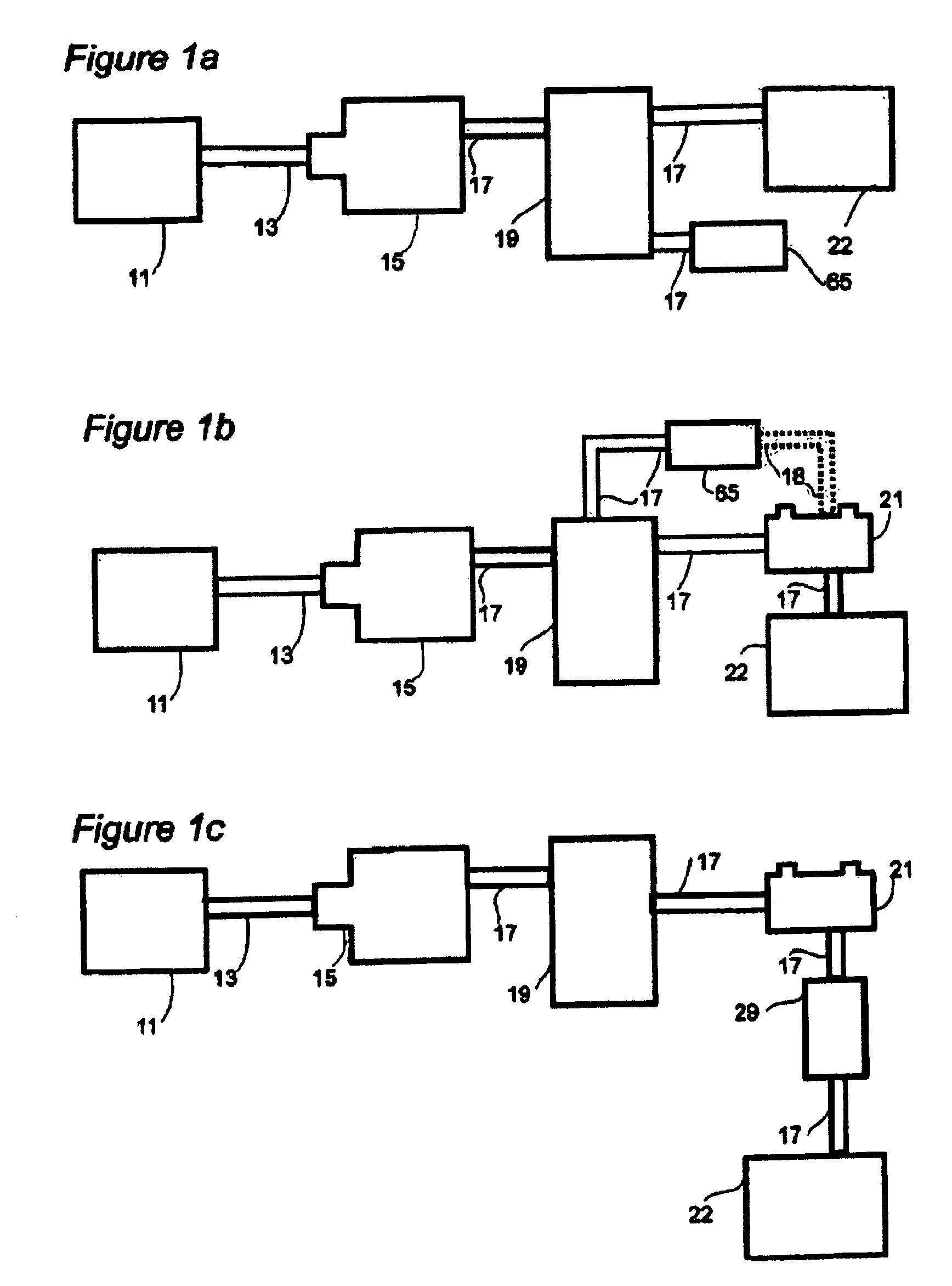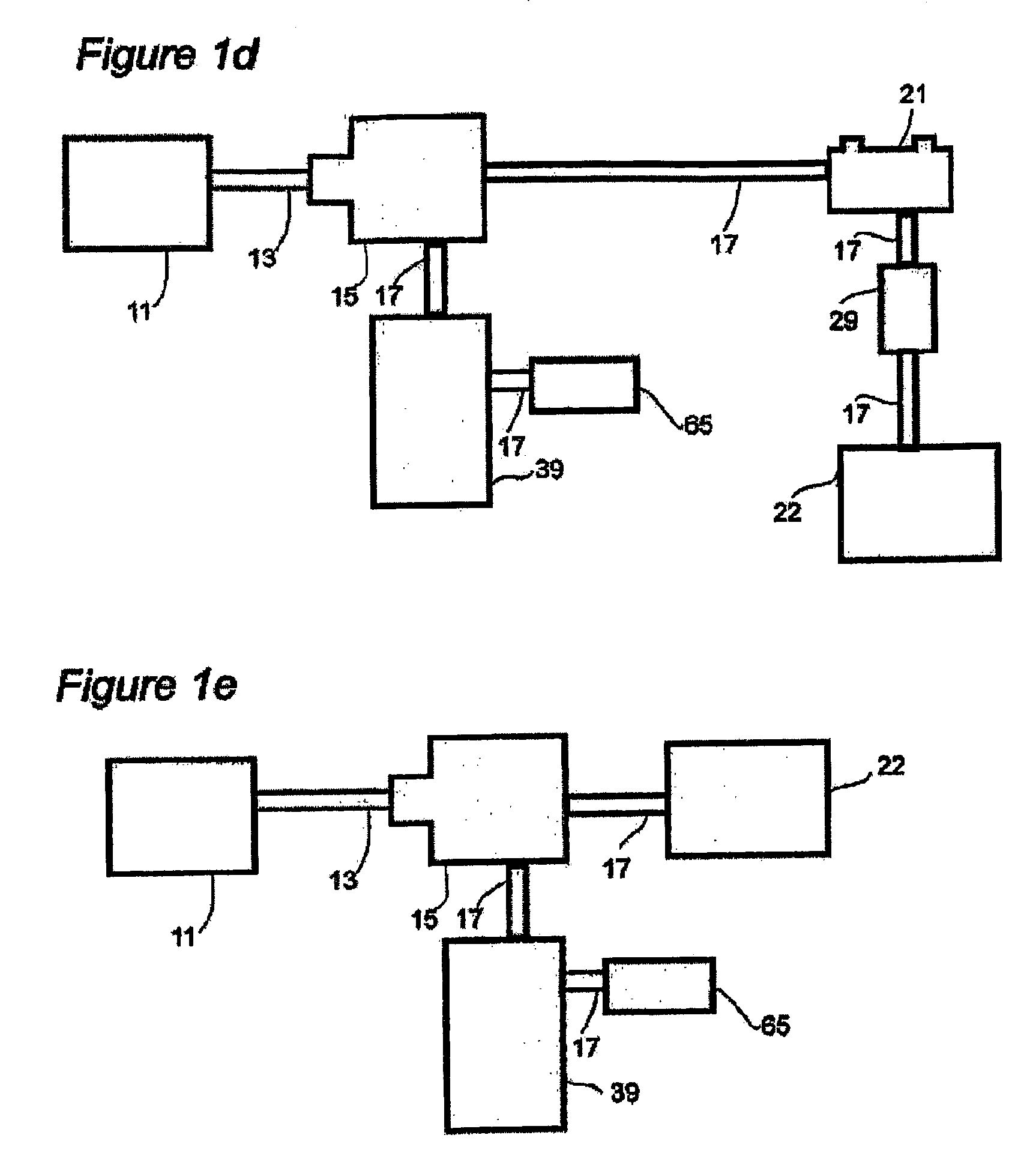Electronically Controlled Engine Generator Set
a generator set and electric control technology, applied in the direction of electric generator control, machines/engines, transportation and packaging, etc., can solve the problem that the feedback does not directly control the engine speed, and achieve the effect of avoiding fumes and pollution, and avoiding the need for engine throttling
- Summary
- Abstract
- Description
- Claims
- Application Information
AI Technical Summary
Benefits of technology
Problems solved by technology
Method used
Image
Examples
example 1
Changing a Resistive Load on a Generator
[0114]For example, the present invention may be used with a DC generator supplying a resistive load. Similar results will be obtained from a synchronous AC generator supplying a resistive load with no frequency regulation, or to an AC induction generator with passive supply of excitation, (e.g. a capacitive excitation supply). The immediate example will not work with an AC machine operating on a fixed frequency load.
[0115]An engine produces a mechanical power output. This mechanical power is converted by a generator into electrical power. The electrical power is fed to a resistive load where it is dissipated. Due to external control input, decreased power supply is needed (for example, a thermostat has signaled a state of sufficient heat). To reduce the engine power output, the fuel being consumed by the engine is reduced, which is done by slowing the engine down.
[0116]To slow the engine down, the torque load of the generator is increased. Thi...
example 2
Changing the Excitation Frequency
[0128]Another way to change the torque load of a generator involves changing the excitation frequency of the generator, as described above. This changes the synchronous speed, and the difference in initial speed relative to the synchronous speed causes a generator torque change. This causes a changed electrical power output, a changed torque load, and acts to change the engine / generator speed. While these changes are taking place, the load on the generator will see a constantly changing power supply. If this is inappropriate, then excess power supplied will have to be diverted to a secondary load, and a reduced power supply will have to be supplemented from a separate power source. Change in synchronous speed is a technique applicable to AC generators, such as induction or synchronous machines.
[0129]In general, to slow down the heat engine, the excitation frequency will be decreased, and to speed up the heat engine, the excitation frequency will be i...
example 3
Power Electronic Pseudo-Resistive Load
[0140]A variable resistive load may be used to control the torque / speed characteristics of a generator, thereby obtaining control of engine / generator speed, engine mechanical power output, and thus, engine / generator electrical power output. Such a load need not be an actual resistor, but may be any load with a generally resistive character. Of specific interest are loads which have positive incremental resistance; loads for which current will increase when voltage increases, even if the ratio of current to voltage is not constant as it would be in a true resistor.
[0141]As noted above, there is generally an increase in output voltage as the generator speeds up. The value of positive incremental resistance is that as the voltage increases, the current drawn by the load will increase, increasing the torque load of the generator. A generator providing power to a load with positive incremental resistance will be stable to perturbations in prime mover...
PUM
 Login to View More
Login to View More Abstract
Description
Claims
Application Information
 Login to View More
Login to View More - R&D
- Intellectual Property
- Life Sciences
- Materials
- Tech Scout
- Unparalleled Data Quality
- Higher Quality Content
- 60% Fewer Hallucinations
Browse by: Latest US Patents, China's latest patents, Technical Efficacy Thesaurus, Application Domain, Technology Topic, Popular Technical Reports.
© 2025 PatSnap. All rights reserved.Legal|Privacy policy|Modern Slavery Act Transparency Statement|Sitemap|About US| Contact US: help@patsnap.com



